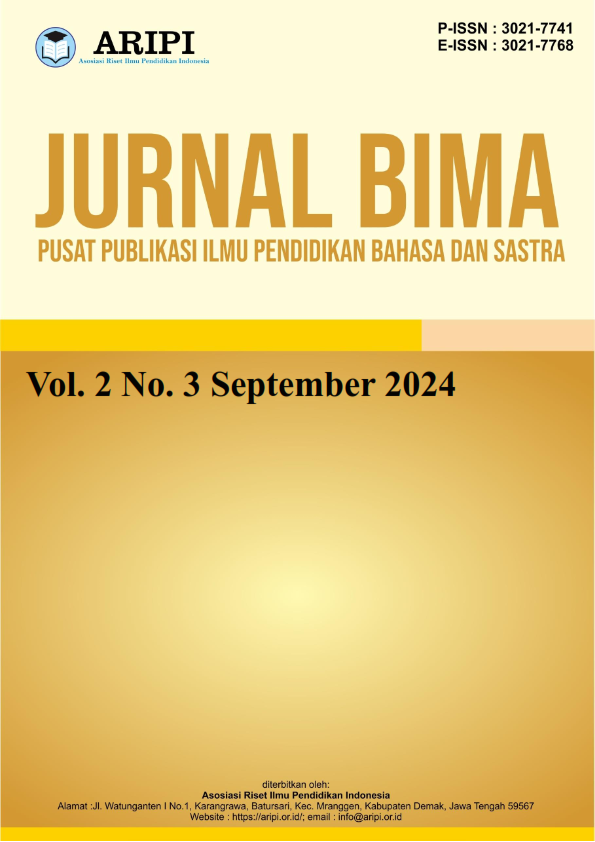An Analysis Of Code Switching Used By Cinta Laura In The Podcast Ruang Sandi
DOI:
https://doi.org/10.61132/bima.v2i3.1021Keywords:
Cinta Laura, Code Switching, Podcast, YouTubeAbstract
English is an international language used by many people in various countries. The ability to use English well can open up international standard educational and employment opportunities, because all companies need employees with a certain level of English skills to reach top positions. Currently there is a phenomenon of people who like to mix Indonesian and English in everyday conversations. This happens because it is influenced by the environment, society, education and trends. People who usually speak one language and then switch to another language, either at the beginning, in the middle or at the end of their speech, are called Bilingual. This research aims to identify the most common types of code switching used by Cinta Laura when creating YouTube content with Sandiaga Uno in the Ruang Sandi Podcast on YouTube. This research uses observation techniques, especially non-participatory, and data collection is carried out by watching one of the contents of the Ruang Sandi Podcast in collaboration with Cinta Laura and only focusing on what she said. The research results show that there are 2 speech data from Tag Code Switching, 10 speech data from Intrasentential Code Switching and 8 speech data from Intersentential Code Switching. The resulting percentage is 10% Tag Code Exchange data, 50% Intrasentential Code Exchange data and 40% Intersentential Code Exchange data.
Downloads
References
Auriliya, T. F., Winarta, I. B. G. N., & Santika, I. D. A. D. M. (2022). Types and functions of code-switching found in Daniel Mananta’s podcast on Spotify. Elysian Journal: English Literature, Linguistics and Translation Studies, 2(2). https://e-journal.unmas.ac.id/index.php/elysian/article/view/3613/2863
Cohen, L., Manion, L., & Morrison, K. (2013). Research methods in education (6th ed.). Routledge.
Doğruöz, A. S., Sitaram, S., Bullock, B. E., & Toribio, A. J. (2023). A survey of code-switching: Linguistic and social perspectives for language technologies. arXiv preprint, arXiv:2301.01967.
Grosjean, F. (1982). Life with two languages. Harvard University Press.
Luthfiyani, F. (2014). Code-switching and code-mixing on Korean television music show After School Club. (Undergraduate thesis). English Letters Department, Adab and Humanity, Jakarta Islamic State Syarif Hidayatullah.
Masna, Y. (2020). EFL learners’ code-switching: Why do they switch the language? Englisia: Journal of Language, Education, and Humanities, 8(1), 93-101.
Rianda, D. (2017). Code-switching and code-mixing used by Boy William in Breakout music program at NET TV. (Undergraduate thesis). IAIN Palangka Raya.
Romaine, S. (1995). Language in society: An introduction to sociolinguistics. Oxford University Press.
Sari, M., Arifin, A., & Harida, R. (2021). Code-switching and code-mixing used by guest star in Hotman Paris Show. Journal of English Language Learning, 5(2).
Usmanova, N. X. (2024). Sociolinguistic factors in code-switching. American Journal of Interdisciplinary Research and Development, 29, 220-224.
Wardhaugh, R., & Fuller, J. M. (2021). An introduction to sociolinguistics. John Wiley & Sons.
Downloads
Published
How to Cite
Issue
Section
License
Copyright (c) 2024 Jurnal Bima : Pusat Publikasi Ilmu Pendidikan bahasa dan Sastra

This work is licensed under a Creative Commons Attribution-ShareAlike 4.0 International License.






